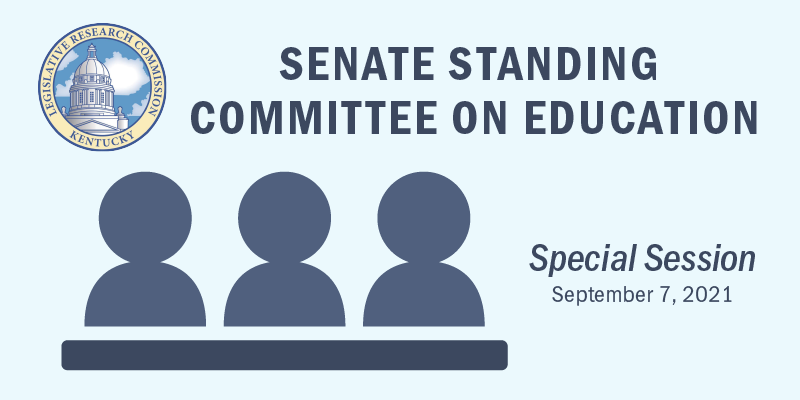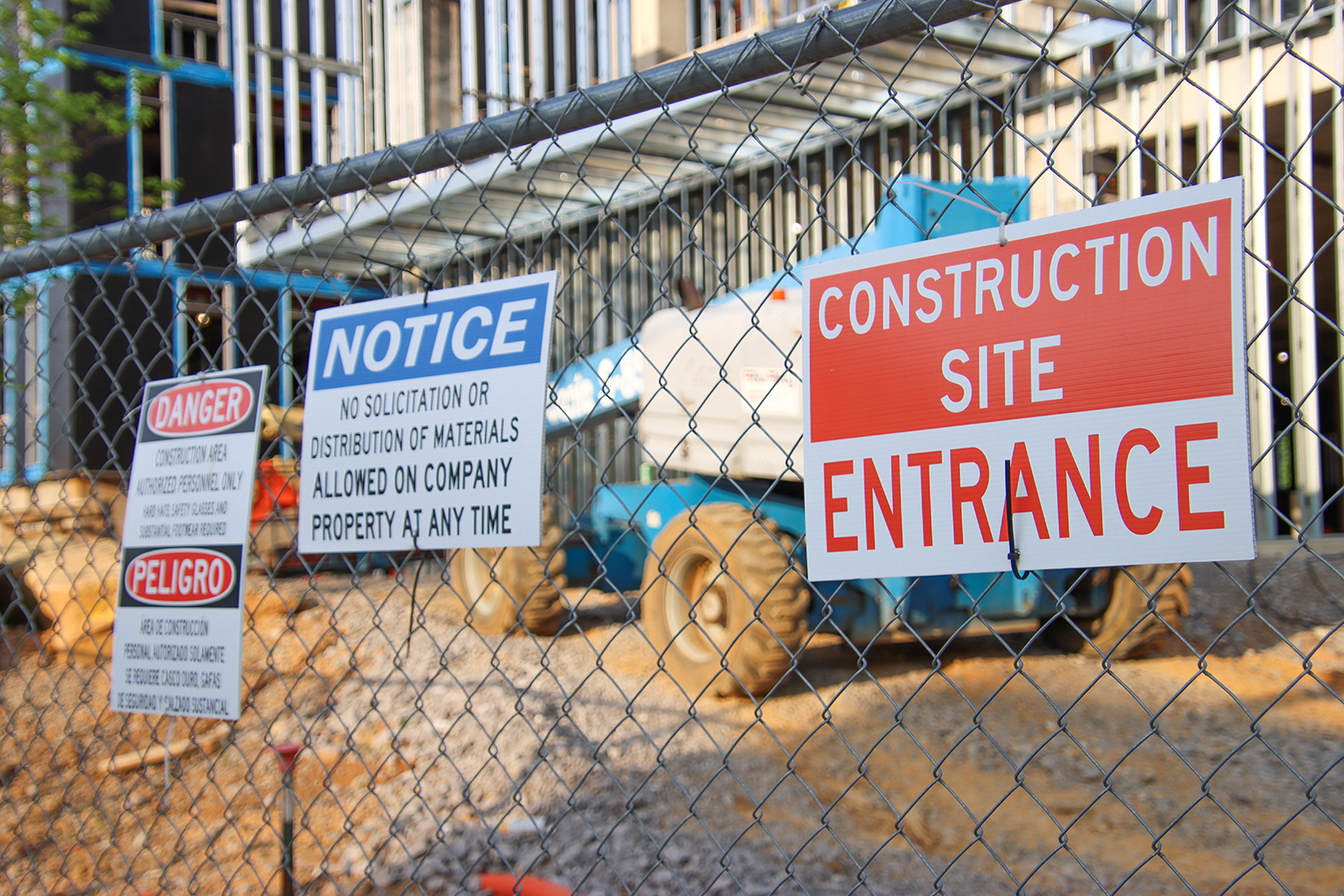 With COVID-19 cases surging throughout the Commonwealth, Gov. Andy Beshear called the Kentucky General Assembly into a special session beginning Sept. 7 to work toward providing additional flexibilities and relief for Kentuckians through pandemic-related policies.
With COVID-19 cases surging throughout the Commonwealth, Gov. Andy Beshear called the Kentucky General Assembly into a special session beginning Sept. 7 to work toward providing additional flexibilities and relief for Kentuckians through pandemic-related policies.
On the education front, Tuesday’s meeting of the Senate Standing Committee on Education focused on Senate Bill (SB) 1, legislation that would declare the Kentucky Board of Education’s (KBE) recent emergency regulation mandating face masks in school facilities null, void and unenforceable.
“The General Assembly now bears the responsibility for the decisions they make,” Commissioner of Education Jason E. Glass said in a Sept. 4 statement regarding the special session. Glass said he hoped Kentucky’s legislators would follow the public health science supporting the use of masks in school facilities, as the KBE had done in issuing its emergency regulation.
“While the department has been working with legislative leaders and the governor’s office to suggest solutions that will help our districts get through the surge as safely as possible, as well as keeping as many students as is practicable benefiting from in-person instruction, we have significant concerns about the current bill being considered,” Glass said Tuesday.
“The current bill does not go far enough in providing the flexibility in different school models that (our districts) need to support continued school operations given the disruptions you are currently experiencing due to COVID-19 outbreaks and quarantining,” he said. “Further, the politically motivated effort to remove masking requirements in public schools flies in the face of virus mitigation efforts at the very time they are needed most.”
As of Sept. 7, 32 of Kentucky’s 171 public school districts have suspended in-person instruction and transitioned into non-traditional instruction (NTI) because of the statewide spread of COVID-19, Sen. Reggie Thomas pointed out during the committee meeting.
“To say now that we are not going to require masks in our public schools where our children are going to school, I think is completely irresponsible of us,” Thomas added.
Test to Stay Model
The proposed legislation calls on the Kentucky Department for Public Health to develop a COVID-19 test-to-stay model that may be administered by school districts to minimize the impact of quarantining non-symptomatic students and staff. The test-to-stay model allows students who are exposed to COVID-19 at school the opportunity to receive a test for the virus to determine if they can remain in the classroom or be required to quarantine.
“If a district chooses not to do the test-to-stay policy, that’s perfectly fine,” said Sen. Max Wise. “It’s simply giving them the option. We’ve seen many districts already utilizing test-to-stay.”
On Sept. 1, Green County Superintendent Will Hodges testified before the Interim Joint Committee on Education about a test-to-stay model that has successfully been implemented in his district through a partnership with Cumberland Family Medical.
“(The program) is worthwhile,” Hodges said during the Sept. 1 meeting. “We’re finding a way to keep children in classrooms.”
The district provided families with the option to have their children tested for six days following the school exposure, with 80-90% electing to participate. Of the 159 students who have had to take part in the program, only 13 have tested positive during the six-day testing period.
Because of the program, the district has been able to continue in-person learning this school year and has not had to use any of the 10 NTI days provided by state statute.
A separate piece of legislation will appropriate funds for the test-to-stay program.
“If a district wants to develop their own policy, their own plan for moving forward, they have the right to do so, especially as it relates to quarantining,” Wise said.
Remote Instruction
With the General Assembly expressing little interest in providing unlimited NTI days to districts, SB 1 would provide districts with up to 20 days of temporary remote instruction to be used through Dec. 31. Superintendents would be responsible for issuing the temporary remote instruction to students at the school, grade, classroom or individual level because of significant absences of students or staff related to COVID-19.
Before superintendents can make these decisions, they must receive prior authorization from the district’s board of education.
“This is not non-traditional instruction,” explained Wise. “… This is more of a surgically focused protocol that districts can utilize. If a 5th-grade class is having a high number of positives, then instead of shutting down the entire school district, the 5th grade can look to move to remote learning. …
“We do not wish to use remote learning for district-wide shutdowns.”
The 20 days of remote instruction that would be provided to districts under SB 1 would be in addition to the district’s 10 NTI days, Wise said.
Students temporarily assigned to remote instruction must receive at least the minimum daily instruction required under KRS 158.060, which includes the content standards provided in the Kentucky Academic Standards.
The use of temporary remote instruction would not be counted against student attendance days. As for funding related to student attendance for the 2021-2022 school year, the bill would allow districts to use previous attendance data from either the 2018-2019 or the 2019-2020 school years to calculate the average daily attendance that will be used in calculating Support Education Excellence in Kentucky (SEEK) funds and any other state funding based in whole or in part on average daily attendance for the district.
The General Assembly intends to enact legislation to address the adjustment of SEEK calculations related to attendance growth over prior school years at its upcoming general session in January.
Substitute Teachers
SB 1 also aims to provide flexibility in how school districts employ individuals to serve as short- or long-term substitute teachers. For the 2021-2022 school year, substitutes could have at least 64 hours of college credit or a high school diploma or equivalent and four years of occupational experience related to education, childcare or the required subject area.
Under the legislation, classified staff may perform classroom instructional activities without direct supervision by certified staff, as well as provide home and hospital instruction.
“The bill draft does contain important elements that would expand options for staffing. However, I am concerned with language allowing uncertified individuals with no training, experience or support to effectively assume the role of a classroom teacher,” Glass said. “Teaching is not something everyone can or should do and such a proposal devalues the profession of education.”
Districts would be able to employ all individuals on a probationary status upon receiving a preliminary background check conducted by the Administrative Office of the Courts.
“We want to give as many superintendents the discretion to do these hires, still in a safe manner, but in an expedited manner,” Wise said.
Kentucky State Police and the Kentucky Cabinet for Health and Family Services will prioritize the completion of school district employee background checks for the 2021-2022 school year.
Additionally, SB 1 would allow districts to employ retired certified staff without the statutory limits on pay related to their final salary upon retirement. Re-employed retirees would be allowed to continue drawing their retirement allowance for an initial retirement occurring by Aug. 1, but shall not accrue any additional retirement benefits during reemployment.
Provisions surrounding re-employed retirees would expire Jan. 15, 2022. Upon expiration of these temporary provisions, any future re-employment or ongoing re-employment of retirees would be subject to KRS 161.605 and 161.612.
While Thomas praised the proposed legislation for focusing on alternative methods to get staff in schools to address the statewide school staffing shortage, he said if the state doesn’t take the necessary steps to ensure their health and safety, they won’t want to come.
“We have people who don’t want to come,” he said. “If we say you can’t wear a mask, we don’t care about you getting a vaccine, then they won’t come. We can employ all other strategies encouraging people … but if we don’t do the right things to begin with by saying people have to wear masks, people have to get vaccines, then it doesn’t matter what we do after that because they won’t want to come to work because they’re rightfully concerned about their health and their safety and being able to live.”
Other items and flexibilities that would be provided by SB 1 include:
- Requiring school districts to submit a COVID-19 school operations plan to KDE for informational use only, as well as making it publicly available on the district’s website;
- Allowing districts to reduce the school year below 170 days as long as they provide students with the required 1,062 hours of instruction. No school day may exceed seven hours and instruction cannot occur on Saturdays. KDE will issue a report to the Interim Joint Committee on Education by Nov. 1, 2022, on how districts met the required hours;
- Requiring all certified staff, and any classified staff designated by the district, to report to their usual work sites on NTI days if used for COVID-19 purposes, except for employees quarantined because of COVID-19 whom the district determines can fulfill their job duties remotely; and
- Permitting districts to develop a vaccination incentive plan for staff and students. The regulation would, however, forbid “intimidation tactics or negative incentives.”
Following an 8-5 vote in favor of SB 1, the legislation cleared the Senate Standing Committee on Education and will move ahead in the legislative process.
MORE INFO …
COVID-19 Relief Special Session KDE K-12 Policy Recommendations




Leave A Comment